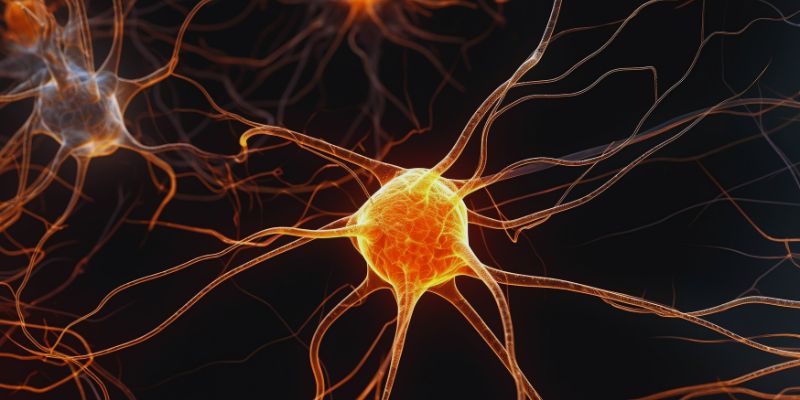Treatment for Globoid Cell Leukodystrophy: A Practical Guide
Krabbe disease is a rare genetic disorder known as Globoid Cell Leukodystrophy. It is caused by a deficiency in galactosylceramide beta-galactosidase (GALC), an enzyme crucial in degrading some fatty molecules like galactosylceramide and psychosine, which are required to maintain normal nerve functioning. Due to GALC deficiency, these molecules get stored within the body, which leads to damage to the central nervous system (CNS) and destruction of the myelin sheath, an insulating layer covering the nerves.

Understanding Krabbe Disease and Its Impact
About 1 in 400,000 people worldwide suffer from this disease. The different manifestations include variations according to the age of onset. The commonest and most severe form of the disease is the infantile-onset type, which is characterized by a rapid neurological decline. Late-infantile, juvenile, and adult-onset forms present more gradually, but they still critically affect the quality of life.
Symptoms and Causes of Krabbe Disease
Different types of Krabbe exhibit other symptoms. For instance, in the infantile-onset form, symptoms like irritability, poor feeding, and stiffness in the muscle may initially show. As these initial symptoms advance, they lead to more severe symptoms, including loss of motor skills, affected vision, and the emergence of seizures. In the later-onset forms, patients also experience weakness, difficulty walking, vision problems, and cognitive decline.
The etiology of Krabbe disease is genetic. Instead, it is the one having an autosomal recessive disorder; hence, the child must inherit both the faulty alleles of the GALC gene from both parents to have the Krabbe disease. The mutation blocks the activity of the GALC enzyme, resulting in a toxic accumulation of psychosine, which damages the nerve.
Early Detection: The Role of Newborn Screening
Batch processing will play a decisive role in managing Krabbe disease at its very onset before the symptoms have fully manifested. Although currently in newborn screening programs of some states in the United States, Krabbe does include the measurement of GALC enzyme activity and psychosine levels in sample blood from a newborn baby, allowing the identification of at-risk patients.
In 2024, Krabbe disorder was recommended as part of the Recommended Uniform Screening Pathway. This development could encourage families to seek treatment options like hematopoietic stem cell transplantation (HSCT) as soon as possible, thereby avoiding serious brain damage.
Hematopoietic Stem Cell Transplantation: A Lifesaving Option
The most effective and predominant treatment of Globoid Cell Leukodystrophy is hematopoietic stem cell transplantation (HSCT). In HSCT, the patient's diseased bone marrow is substituted by healthy cells from a donor that can produce functional GALC enzymes.
For early-diagnosed infants, HSCT becomes a lifesaver, but timing is essential. HSCT does well when it is done even before the appearance of any symptoms, ideally within the first four to six weeks of life. HSCT for later-onset forms may end the disease's onward momentum while also improving the quality of life and lifespan, though it may not reverse charges already incurred.
HSCT comes with considerable benefits but is also associated with certain risks: The procedure needs high-dose chemotherapy to condition the body for the transplant, which causes side effects.
Managing Symptoms and Enhancing Quality of Life
If intervention is not early, Krabbe disease management is focused on symptom management. Supportive care to increase the comfort of the patient as providing some of the forms of extraordinary struggles requires:
- Physical therapy will maintain their mobility and muscle function.
- Pain, seizures, and stiff muscles may be treated with medication.
- Nutritional support ensures proper intake, particularly in patients who have difficulty swallowing.
Most families that look after a Krabbe-affected member will have to learn to navigate the healthcare system alongside a team of specialists such as neurologists, physical therapists, and nutritionists. The emotional and psychological support of the caregivers also forms part of holistic care.
Research Advancements and Future Directions
Research is still being carried out on innovative approaches for treating and managing Krabbe disease. One possible area of study is gene therapy, which consists of correcting the defective GALC gene at a molecular level. Initial studies show that such treatment would restore enzyme function and halt progressive neurological damage. Another research field is replacing the deficient enzyme with direct delivery of functional GALC enzyme to the patient's body. Although these experimental approaches are still being developed, they petrify some hope for possible treatments that would be more effective and available.
The Importance of Family and Community Support
Coping with Krabbe disease can be an overwhelming experience for families. The emotional toll of managing a progressive, life-limiting condition requires resilience and support. Connecting with patient advocacy groups like the Hunter’s Hope Foundation can provide families with valuable resources, guidance, and a sense of community.
Advocacy groups also play a key role in raising awareness about Krabbe disease, promoting research efforts, and supporting the expansion of newborn screening programs. Their work ensures that more families can access early diagnosis and lifesaving treatments.
Why Early Treatment Matters
The significance of early intervention in treatment for Globoid Cell Leukodystrophy cannot be overstated. For infantile-onset cases, prompt diagnosis and timely HSCT can mean the difference between life and death. Proactive management can slow disease progression and improve long-term outcomes, even in late-onset forms.
Public health initiatives, such as newborn screening, are essential in enabling early treatment. By identifying Krabbe disease before symptoms appear, these programs allow families to seek effective care and plan for the future.
Conclusion
Krabbe disease is a rare and devastating condition, but advancements in early diagnosis and treatment options offer hope to affected families. While hematopoietic stem cell transplantation remains the cornerstone of care, ongoing research into gene and enzyme replacement therapies promises to transform the treatment landscape in the coming years. With continued efforts to expand newborn screening and raise awareness, more families will have access to lifesaving interventions and the support they need to navigate this challenging Journey. Through early detection, timely treatment, and a multidisciplinary approach, the impact of Krabbe disease can be mitigated, offering a brighter future for those affected.













